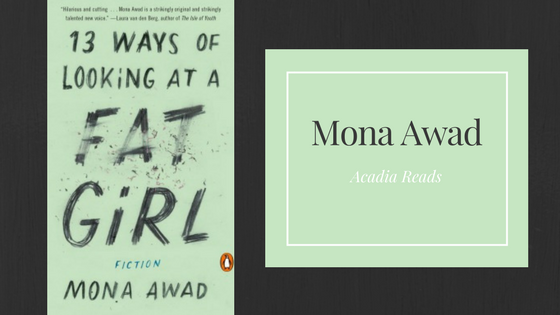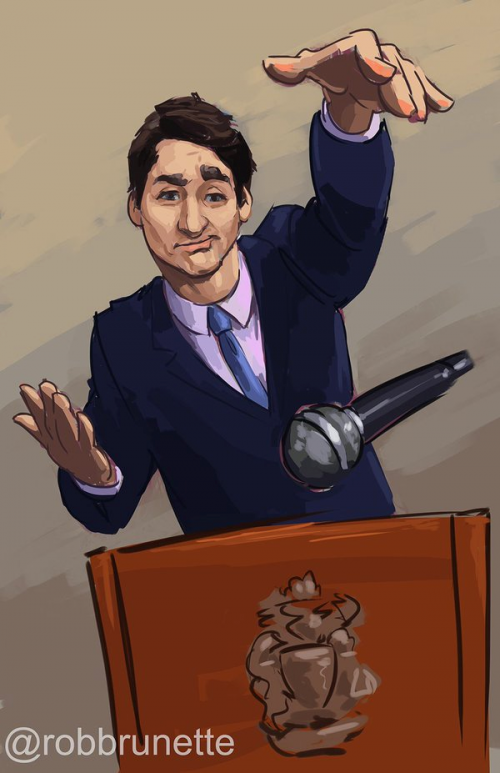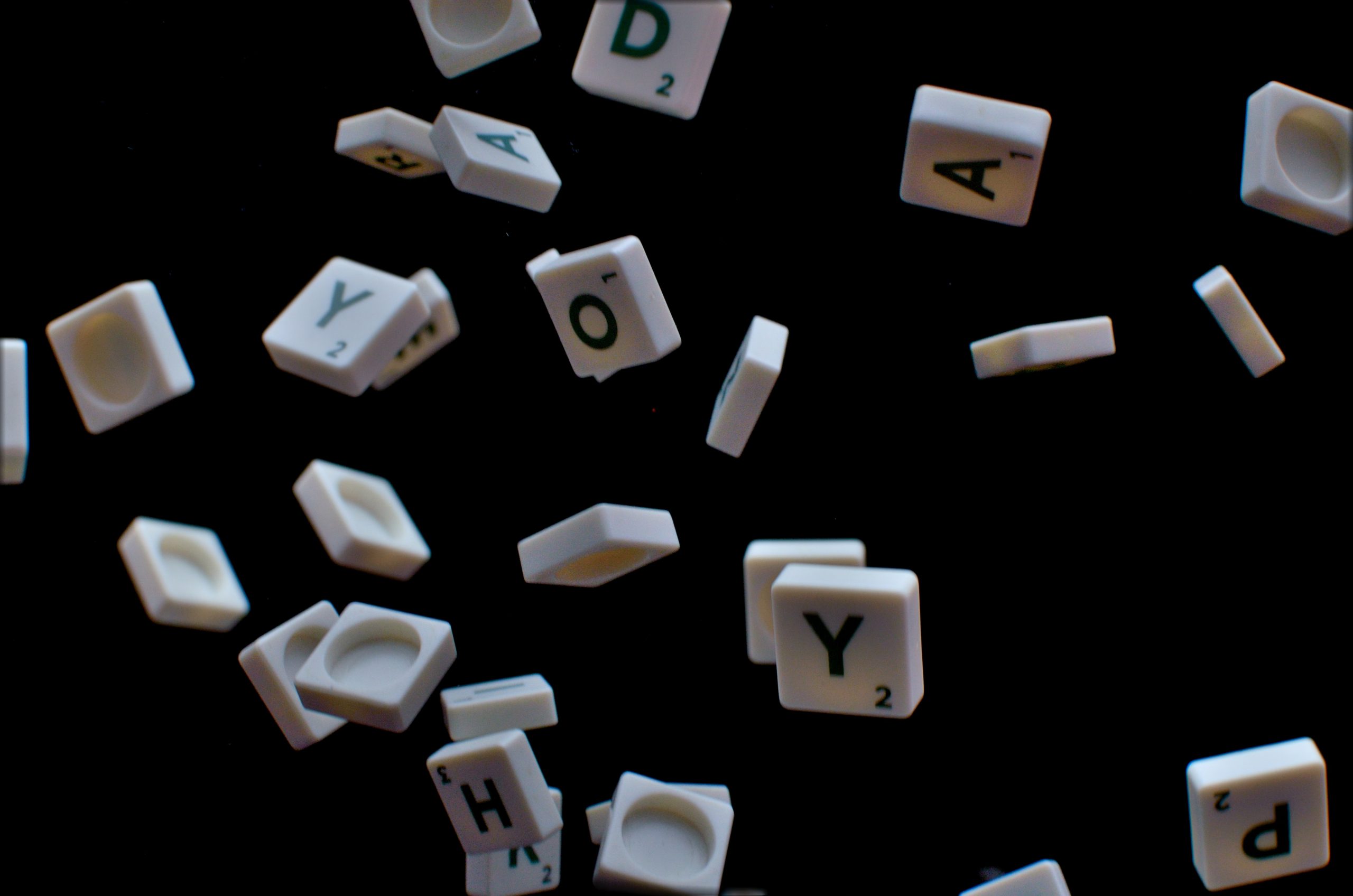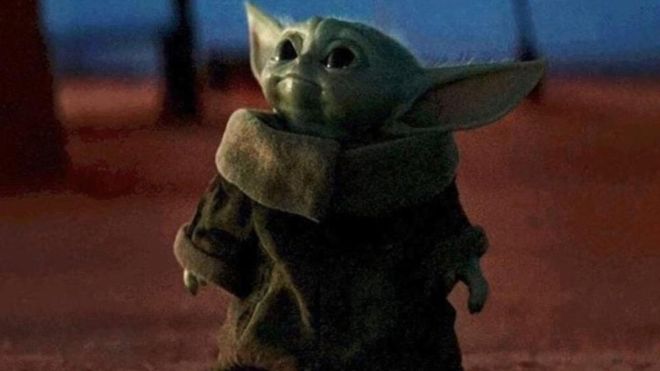Mona Awad’s 13 Ways of Looking at a Fat Girl, the 2017/2018 Acadia Reads pick, gives readers a glimpse into the struggles, mind, body, and soul of protagonist Elizabeth. The ways that Elizabeth views food and her body is abysmal. However, the book itself is far from it. Mona incorporates a dark humour throughout the stories which softens the blow of Elizabeth’s transformation not only in terms of weight, but in terms of overall identity as well. We are introduced to the chubby wide-eyed teenager Lizzie who then shifts into college student Beth. In her college days, Beth becomes obsessed with food and develops a determination that the reader is privy to once she becomes Elizabeth: married, thin, and elegant. Everything she has ever wanted to be. But there is also a disordered thinking that has creeped in, paving the way for Liz.
What makes Mona Awad’s 13 Ways unique is that it isn’t one continuous story, but a collection of 13 short stories each with a different focus whether it be one of Elizabeth’s friends, food, men, or an all too relatable experience in a fitting room. This style of writing allows for the distinct identities stemming from Elizabeth to shine through. Although it is one person throughout the 13 chapters, there is enough of a disconnect that illustrates the daunting transformations that the protagonist goes through. All but two of the stories are from the point of view of the protagonist, but Awad gives us a taste of other perspectives as well; one from a lover and one from Elizabeth’s husband. This gritty novel leaves those who resonate with the stories feeling a fleeting sense of bittersweet nostalgia.
As part of Acadia Reads, Mona Awad came to campus and her presence was just as enthralling as her novel. In discussing her writing process and inspirations, Awad revealed herself openly to her audience.
“I was struggling with body image issues myself. I was very overweight; a 22-year-old goth girl, in some ways similar to my main character Lizzie. The idea to start writing came from a few places. One was the experience of clothes shopping as an overweight person. Specifically, at women’s plus sized stores, which back in the 90’s were abysmal. Especially if you were a young goth girl. A t-shirt with a sequined cat on it isn’t going to do it for you—that’s not what you can wear to a club called Death”.
Another source of inspiration for Awad existed in the various pieces of creative writing that she was exposed to in University. Recalling a piece of advice one of her Professors extended to her class, “he said that ‘you can write things out of you’, and when he said that he pushed his hands away from his body. Both that statement and that gesture thrilled me. I had never thought of writing in that way”. Awad referenced the writings that inspired her and gave licence to make 13 Ways possible, the writings that gave her permission to write out of herself. Among the list: Black Tickets by Jayne Anne Phillips and, of course, “13 Ways of Looking at a Blackbird” by Wallace Stevens.
“There are some texts that you have the fortune to encounter in your life, and if you’re an artist they just give you permission. They make you realize what depths and what tricks are really available to you. What freedoms are available to you…I maintain that the text that is going to do that for you, as a writer, as a student, as a person just existing in the world, may not be the one you’re already holding close to your heart. It may come as a real surprise to you. It certainly did for me… I think for anyone involved in words and story-telling that there is a constant engagement with what has been written as a way of shaping what will be written”.
After attending Mona Awad’s presentation and reading her book (twice), I was asked what 13 Ways of Looking at a Fat Girl was about, but I could not give just one answer. The novel is not about just one character, it is about all the characters and all the readers and every relationship the characters and readers have. It is about vulnerability, desire, rage, sadness, hate, love, and everything in between. The beauty of Mona Awad’s novel is the emotions presented within the situations, because they can be applied to more than just body image and weight. Even if a reader can not resonate with those types of struggles, they can certainly apply the raw emotion to some sort of situation in their life. In my opinion, this is what makes a book worth reading.





